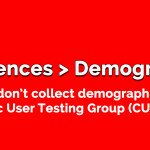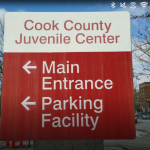When I was on the cross-country team at Gordon Technical High School, we had a running joke-slash-motivational line. After we warmed up, stretched, and started to get ready for the afternoon’s workout, someone would say, “where is the line?”. What they meant was, “where are we going to start running from?” More specifically, “where will we be when we know to stop running?”
The answer would come from someone else (it was a different person every day who asked and answered, but it was never planned). The answer was always the same: “You are the line. The line is you”.
Then we would all line up next to and behind the person who asked where the line was. Someone would set their watch, say “go”, and we’d start the run.

People often ask me if civic data, like the stuff available at data.cityofchicago.org is accurate. Tony Sarabia asked me this recently on his Morning Show. It’s a good question, especially from good journalist, because you should know your source. But the answer is that civic data is a messy manifestation of the agony and the ecstasy of the human condition: people crying out for help after being victims of crime, people submitting a service request because the lights are out on their block, someone pulling a building permit to turn a porch into a baby’s room.
When I look at PlowTracker or ClearStreets, I don’t see the fun icons or the crisp lines. I see hundreds of city workers who get into trucks and spread salt in dangerous conditions. That’s not just data. That’s human beings— our neighbors— doing their jobs; feeding their children. We can download raw data sets, send them through hoops and massage tunnels, load them on our own servers, and it’s not really ours.
Civic data is a civic treasure. Something that represents all of us. We talk a lot in government, philanthropy, and communications about “engagement”. There is nothing more engaging than a line in a spreadsheet that has us in it.
You are the line. The line is you.






